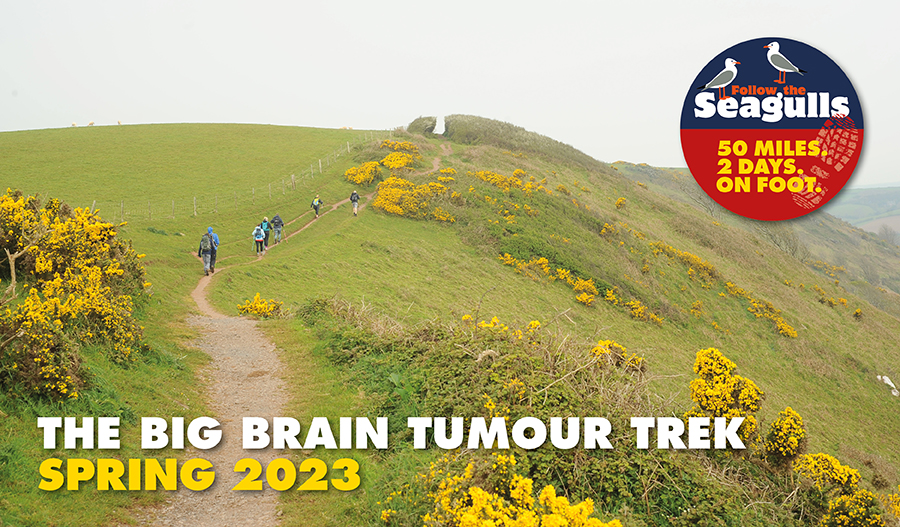Follow the seagulls 2023
Follow the Seagulls is back for 2023 and it is bigger than ever. Now taking place across 5 locations, Follow the Seagulls is a long distance charity trek to help people with a brain tumour get the support they need. It’s your chance to do something truly incredible that matches your passion to help the 80,000 people in the UK who are afraid and alone because of their brain tumour diagnosis.
Locations for 2023:
Trek 50 miles over 2 days along stunning coastal paths in one of 5 locations. Click on the location names to sign up:
- Brighton – 3 and 4 June
- Dartmouth – 15 and 16 April
- Fife – 15 and 16 April
- Isle of Wight – 1 and 2 April
- Whitby – 1 and 2 April
Why do we walk?
It will take all you’ve got. But it will help the thousands of people in the UK who are living with a brain tumour, to feel less alone, less afraid, and more in control. By fundraising £500 you could fund:
- 10 hours of one-to-one coaching. When life with a brain tumour feels overwhelming, our coaching conversations help people to focus on the things that matter most to them, so they can life their best day every day.
- 12 brain boxes. Our brain box is customised for every individual based on their needs with a selection of brainstrust resource to help them feel informed and prepared, as well as small gifts to help them practice self-care.
- 33 webinars. Our webinars are delivered by brainstrust support specialists and expert speakers from across the UK. They help connect people with a community who understands and empower people with the information they need to live the best life possible.
Find out more about why we walk, and hear stories from previous walkers on what Follow the Seagulls meant for them on our Follow the Seagulls website.
Any questions?
If you have any questions about Follow the Seagulls and how to sign up please email Julia on julia@brainstrust.org.uk.






